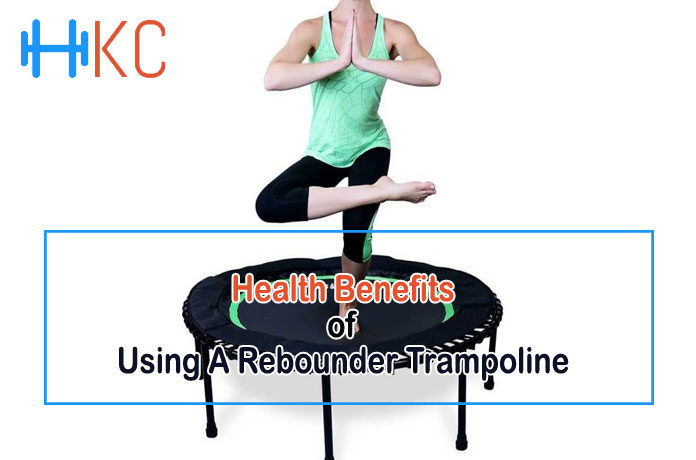Trampolines are among the most-used equipment for physical fitness. They’re especially used for rebounding. If you aren’t familiar with rebounding, it’s a type of workout where you jump on a rebounder trampoline. You can gently bounce where your feet won’t leave the trampoline or you can jump and rise 5 inches from the surface.
Is rebounding more effective than regular exercises?
This exercise is good for the body in general. It helps with the usual things that regular exercise wants to achieve. It’s best for losing weight, toning muscles, and improving cardiovascular fitness. It’s also best for increasing metabolism.
Jumping on a rebounder trampoline for 20 minutes can burn calories. It’s not any different from regular exercises. If we’re talking about effectiveness, rebounding is no doubt effective. However, running, walking, or jogging on a treadmill burns more calories. If your goal is to only burn calories, then rebounding is not for you.
Why Rebound?
Rebounding can positively impact your health. The lymphatic system completely relies on your conscious movement. Movements turn on the lymphatic system. This means that it will flush lymphatic fluids out of the body. Any exercise like running, walking, swimming, etc. can help eliminate lymphatic fluids.
It’s the most effective exercise when it comes to draining toxins from the body. A study showed that increased G-force helps increase the lymphocyte activity. This makes it perfect for boosting the immune system. Even natural health practitioners suggest rebounding as a means of detoxification.
How Does Rebound Work?
Different exercises are done to increase cardiovascular functions or to target specific muscles. Jumping on a rebounder trampoline is unique because it uses acceleration and deceleration. Because of this, it can work on all your body’s cells. It can help increase mitochondrial function and cellular energy.
Here are the activities when you bounce on a rebounder trampoline:
- Acceleration while you bounce upward
- Weightless pause when you’re at the top
- Deceleration while you fall down with an increased G-force
- Impact on the rebounder
Rebounding uses the increased G-force from jumping on a trampoline. Each of the cells in the body responds to the acceleration and deceleration. The up and down movement benefit the lymphatic system because it runs in a vertical direction.
One thing that makes rebounding remarkable is its benefits to your skeletal system. Weight-bearing exercises increase bone mass. With an increased G-force, rebounding causes the weight (supported by the skeletal system) to increase. That’s why it’s very effective.
Benefits of Rebounder Trampoline
- Rebounding supports joint and bone health. It’s a safe exercise for the joints because of the absence of hard surfaces. Since you only jump on the rebounder trampoline, the risk of injury is very low. It’s also good for your bones, as it helps remineralize bones. As a matter of fact, NASA uses it so astronauts can regain the bone density that they have lost in space.
- It reduces cellulite. A stagnant and toxic lymph system causes cellulite. Because it supports the lymphatic flow in the thighs and butts, non-hereditary cellulite is reduced. Cellulite reduction can be observed after a few months.
- It improves posture and balance. If you’re consistently rebounding, your posture and balance will be improved. When you’re bouncing, you’re unconsciously practicing your balance. You’re also automatically engaging your abs and improving your posture.
- It helps the cardiovascular system. Since it supports lymph circulation, it also supports blood circulation, lowering blood pressure. It also helps decrease the blood pooling in veins which improves chronic edema.
- It improves the immune and endocrine systems. Rebounding is especially helpful for those who have a hormone imbalance. That’s because it detoxifies excess hormones. As a result, your immune system will be improved. This supports tissue repair and increases the action of your red bone marrow.
- It strengthens the bladder and pelvic floor. There are many factors that can affect bladder control and the pelvic floor. Many of these factors can be quite embarrassing, too. If you have problems with bladder control and pelvic floor, rebounding can help you. It exerts a force on the cell walls of your pelvic floor and bladder to make it more elastic.
Regularly bouncing on the trampoline will challenge your deep core muscles. This strengthens your pelvic floor muscles, which then improves your bladder control. This results in a healthier and a more comfortable lifestyle.
How To Rebound The Right Way
Before you start jumping on the trampoline, there are a number of things to consider. These include the kind of trampoline, the type of clothing to wear, and the steps on how to rebound the right way.
- You’ll need a trampoline. You’ll need to use a high-quality rebounder if you want something that will last for a long time. Make sure to do your research in selecting the best rebounder.
- Consider the type of clothing you’re going to wear. Wear clothes that will make you feel comfortable. Avoid wearing constricting or tight clothes. For the lymph system to flush out the toxins, avoid wearing tight clothes.

- When you’re all set, you need to consider how long you’re going to do it. It’s better to do it for at least 15 minutes every day. You can divide it into three 5-minute sessions every day. You can also do it for 20 minutes as long as you’re comfortable with it.
- When you’re starting the session, make sure you’re not doing it on a fast pace. Do it at a moderate pace where you can still breathe comfortably. You can jump with your feet on the trampoline or you can bend your knees while bouncing up and down.
- Follow a daily schedule. You can do it after you wake up or at any time of the day. Just make sure you don’t do it after you eat.
Rebounding on a trampoline is a great way in improving your physical fitness. Compared with the other types of workouts, this is more fun and has less impact. If you want to improve your health, too, you can start with rebounding.














